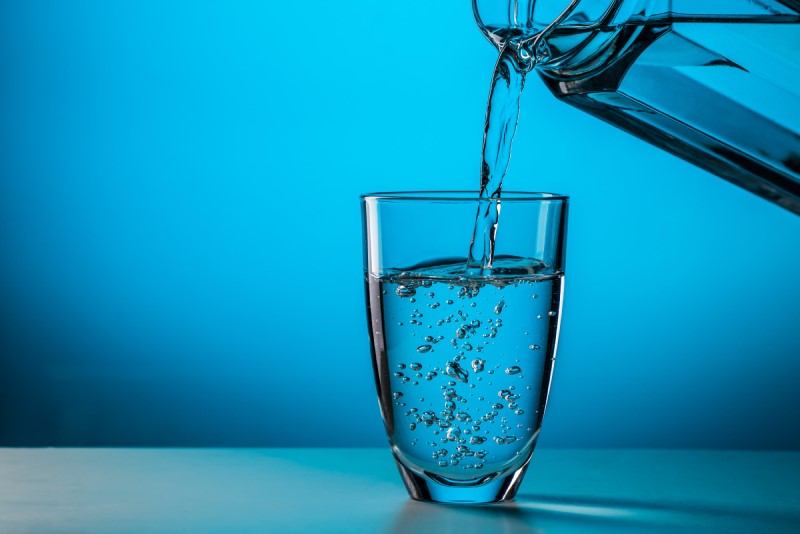Blood glucose rising stage
Carbohydrates generally account for about half (roughly 40 to 55%) of our daily energy intake. After a meal, carbs are transformed into monosaccharides, mainly glucose, through digestion and are absorbed in the small intestine through capillaries. Glucose molecules are carried through the bloodstream to the liver and then distributed to the different parts of the body.
Blood glucose levels increase more or less rapidly according to the glycemic load of the meal. This glycemic load includes not only the carb content, but also the glycemic index of the meal— in other words the digestion rate. The duration of this phase may vary, but it usually lasts three hours.
Blood glucose dropping stage
The rise in blood glucose levels after a meal results in the secretion of a pancreatic hormone called insulin. Insulin operates much like a key that unlocks cells, mainly GLUT4 glucose transporter proteins, which act like revolving doors that allow glucose to enter and to be used by cells. Insulin not only inhibits the production of glucose by the body, but also stimulates the liver and muscles to store glucose in the form of glycogen (glycogenesis) providing the body with a readily available source of energy.
Any excess glucose intake (due, for example, to a high-carb meal) results in the rapid saturation of glycogen stores. Then, insulin stimulates the de novo lipogenesis process again. Here, the excess glucose is transformed into fatty acids and then stored as triglycerides in the liver and the adipose tissue. By activating these metabolic pathways, insulin lowers blood glucose levels. This stage may last about six hours.
Blood glucose stabilisation stage
Blood glucose levels are maintained at a relatively constant level for about 9 hours after you eat a meal. This dynamic equilibrium is ensured by glucagon, a hormone produced by the pancreas with insulin-antagonistic effects. Regulating blood glucose concentrations is essential to ensure a continuous supply of glucose to the brain. However, even though it needs it the most, the brain lacks the storage to meet these high needs.
When blood glucose levels drop, insulin production is lowered, and glucagon secretion is stimulated. Glucagon causes the liver to engage in glycogenolysis by converting stored glycogen into glucose which is released into the bloodstream to keep glucose levels stable. When it comes to muscular glycogen consumption, this process occurs locally.
Lipolysis phase: metabolising body fat
Fasting is prolonged for more than 11 hours after the last meal, these initial desired effects are initiated in your body: the glycogen stores in the liver start to be depleted, the glucagon levels in blood rise while insulin falls thus stimulating glucose synthesis from non-glucidic compounds (glycerol, amino acids…).
At the same time, the body starts burning its own fats to produce energy, a key event that occurs during fasting. In fact, lowered insulin levels often lead to lipolysis: the breakdown of triglycerides stored in fat cells which results in the release of fatty acids and glycerol in blood. This results in reduced fat mass. The fatty acids are mainly used as source of energy by tissues that can metabolize them (muscles, heart…) and glycerol as a major substrate for glucose to supply only glucose-dependent tissues like the brain or red blood cells. Lipolysis is stimulated by the secretion of mediators such as growth hormones and adrenaline.
Ketosis stage
Lipolysis is activated and, about 12 hours after the last meal, the liver starts producing ketone bodies (acetone, acetoacetic acid…) that are used by tissues (including in the brain) as an alternative energy source to glucose. When blood ketone levels rise, the body enters a metabolic state called ketosis, easily measured with urine test strips. If ketones are found in urine, it means that the body is burning fat reserves for energy. In this case, glucose metabolism has been replaced by fat metabolism.
How does this occur? The oxidation of fatty acids occurring during lipolysis provides energy for gluconeogenesis and generates acetyl-CoA, a substrate that, in large amounts, leads to the production of ketone bodies, called ketogenesis. Ketones are g during lipolysis provides energy for gluconeogenesis and generates acetyl-CoA, a substrate that, in large amounts, leads to the production of ketone bodies, called ketogenesis. Ketones are generally excreted through urine by the kidneys.
Autophagy stage
A very beneficial process for the body, known as autophagy, initiates about 14 hours after the last meal, two hours after the ketosis phase has started. It is a protective and adaptive cell survival mechanism that helps the body face stressful conditions such as prolonged fasting. During this metabolic phase, cell waste is removed (such as toxic metabolites and damaged or mutated proteins…) and dysfunctional cell components are degraded and recycled. These cell components are re-used as building blocks to synthetize new materials and to produce energy during a long period of nutritional deficiency. This process can productively lead to cell regeneration.




